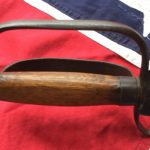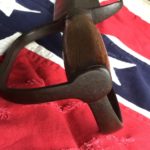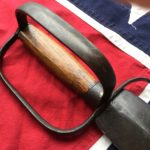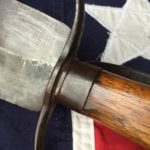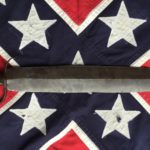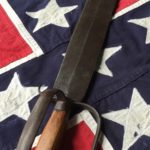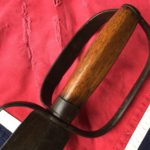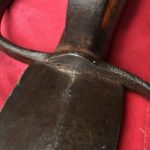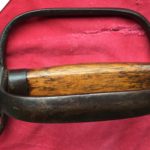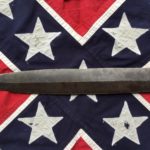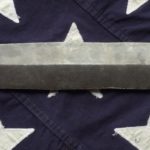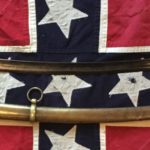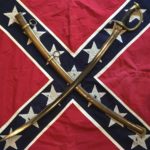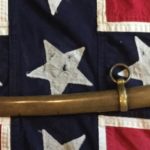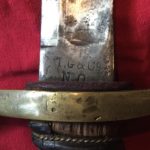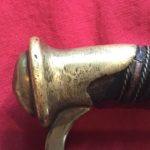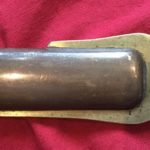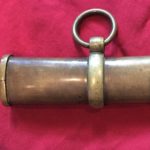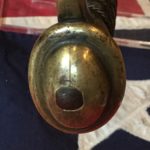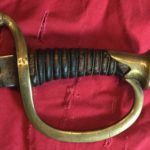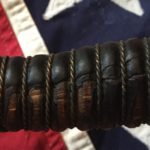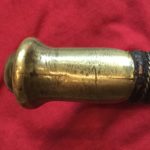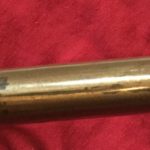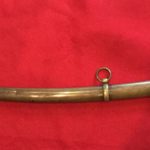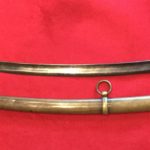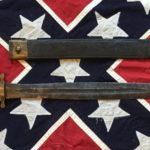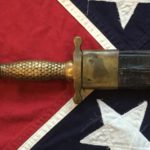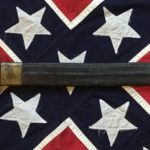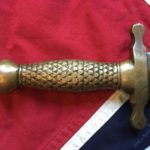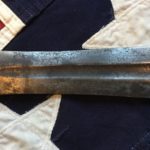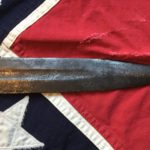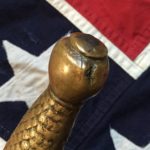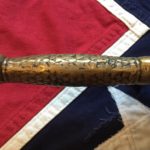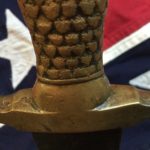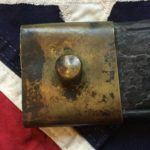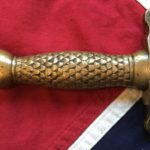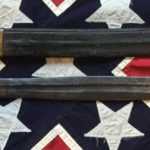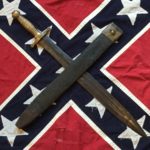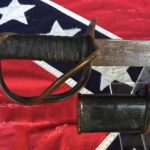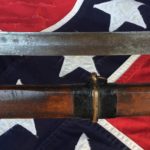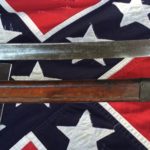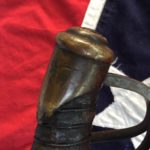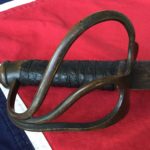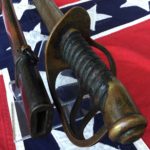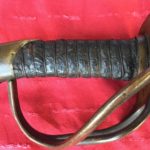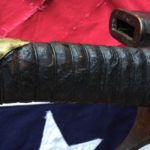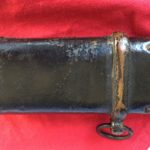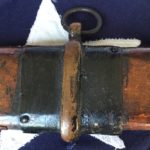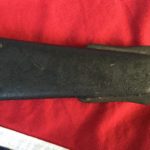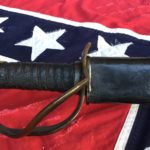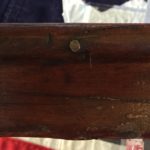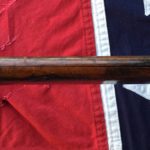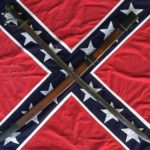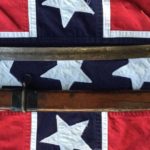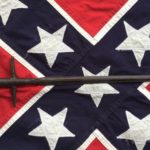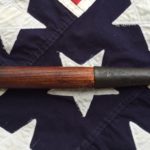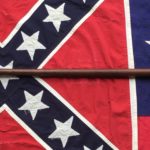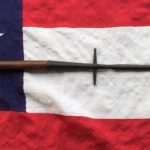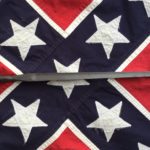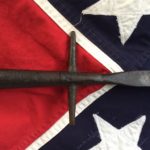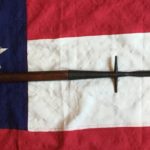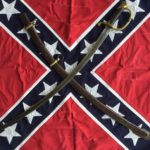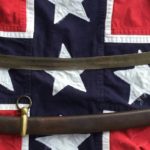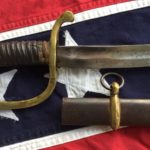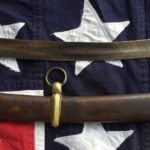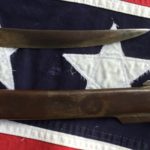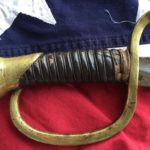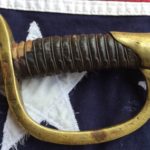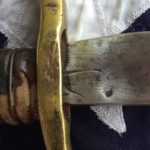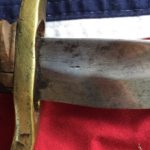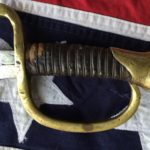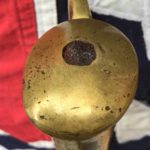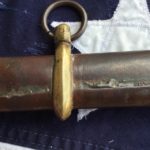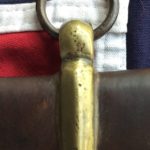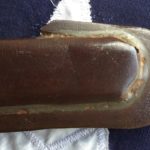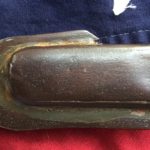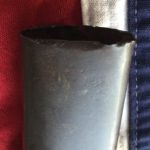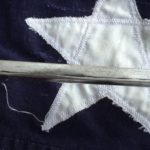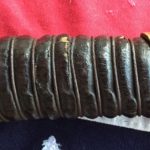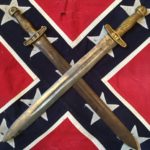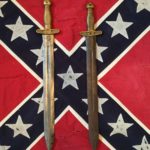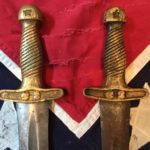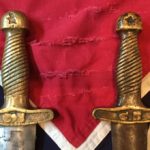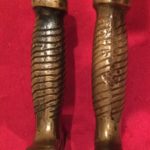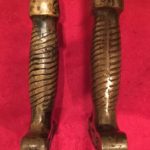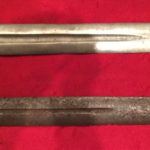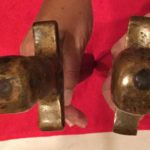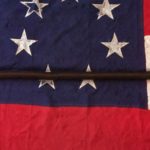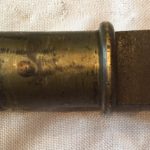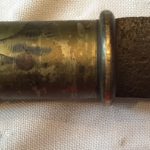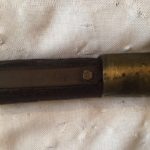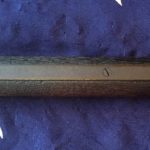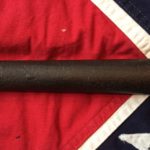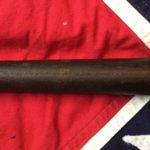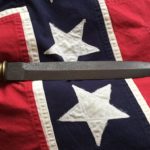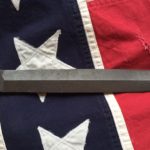-

-
Kenansville D-Guard & Scabbard
-

-
Kenansville D-Handle
-

-
Kenansville D-Guard
-

-
Kenansville D-Handle & Scabbard
-

-
D-Guard Spear Point Short Sword
-

-
Short Sword Quillon
-

-
Louis Froelich D-Guard Short Sword
-

-
Artillery Short Sword
-

-
D-Guard Handle
-

-
Confederate Scabbard, Throat Closeup
-

-
Kenansville Scabbard Throat, Closeup
The following Confederate Short Sword is attributed to Louis Froelich of Wilmington North Carolina. Mr. Froelich born 1817 in Bavaria (Germany), he and his family soon traveled to Liverpool England where he worked as a mechanic/machinist. June of 1860 he and his family leave Liverpool for New York. By the spring of 1861 he and his family are living in Wilmington North Carolina.
At the start of the War Of Northern Aggression, Wilmington was North Carolina’s busiest seaport and largest city with a thriving German community and probably the reason Froelich chooses it for his home. He takes a job working at the Wilmington Button Manufactory where he is soon promoted as “Director” but the factory closes in the summer of 1861.
Not one to sit idle the highly skilled Froelich recognizes the need for arms and equipment the new Southern Government would need. He soon starts manufacturing quality edged weapons, such as Bowie Knifes, Swords, Pikes, and D-Handles. In September 1861 he partners with a Hungarian immigrant named Bela Estvan and they name there weapons manufacturing firm “Wilmington Sword Factory”. Although the circumstances surrounding their business connection remain unclear, Froelich apparently planned to produce the weapons while Estvan would handle sales and distribution.
Soon after opening the Wilmington Sword Factory they change the name to C.S.A. Arms Factory. The change perhaps reflects the owners concern that potential customers might mistakenly believe the Wilmington Sword Factory was limited to the manufacture of only swords. The change also reflected there devotion to the Confederate States of America. There loyalty apparently impressed the government in Richmond and led to a lucrative arms contract.
During the morning hours of February 1863 the Confederate States Armory catches fire and destroys the industrial complex. Shortly after he dissolves his partnership with Bela Estvan and relocates his armory in Kenansville, North Carolina.
In July 1863 the Union Army storms the town and burns the factory. Not one for giving up so quickly Froelich rebuilds and by November 1863 is producing edged weapons, knapsacks and accoutrements. He is financially troubled at this point due to relocation and fires but he continues to do whatever he can for the Southern Government.
After the war Froelich and his family become farmers, planting orchards of apples trees, pear trees, peach trees, plum, apricot and fig trees. Records show that the family had profits of $2663.25 from their agricultural pursuits in 1870. He must have been as good as a farmer as he was a businessman. Louis Froelich dies of consumption (tuberculosis) in Halifax County N.C. October 27,1873 at the age of 56.
Louis Froelich’s legacy as an arms maker to the Confederacy survives today. The Bavarian craftsman immigrated to America seeking a new life, only to find himself situated in the South as war breaks out. He took advantage of the opportunity to provide for his growing family by manufacturing the much needed weapons and equipment for North Carolina and Confederate Troops.
His skills as an industrial craftsman are evident in examples of his now scarce swords, sabers, bayonets, pikes and Bowie Knives. They were all of high quality and were widely used by the Army of Northern Virginia. For the duration of the war North Carolina armed and supplied its 125,000 troops more effectively than any other Southern State, in large part because of the efforts of independent industrialists like Louis Froelich.
So is everybody still with me? I’m hoping that you haven’t zoned out by now,lol…..
I have the pleasure of introducing the newest member of the Civil War Arsenal, which is a Artillery Short Sword sometimes referred to as a Kenansville D-Handle or D-Guard. It’s overall length is 21” long, the blade measures 15 ¾”. The spear point blade is about ¼” thick towards the center of the oval shaped cross section. The grip handle is made of walnut and the guards are of steel stock. The grip is basically round in shape except for a flattened area on either side running up about 3 ¼” up from the guard.
Scabbards are extremely rare especially ones with the leather throat belt loop still in tact. The example that we see here is far from complete but it is a survivor with probably about 65% of it intact. The leather they used for these knifes was usually poor quality which became brittle and cracked easy. The design flaw to this scabbard was the leather belt loop would rub against the D-Handle guard. Over time this would tear though the leather loop dropping it from the belt it was attached too hindering it useless.
So that just about does it for now, I hope you enjoy the photos and if you have any questions about this Knife or any of the other weapons in the Civil War Arsenal feel free to contact me.
Attn: Gene West civilwararsenal@yahoo.com


